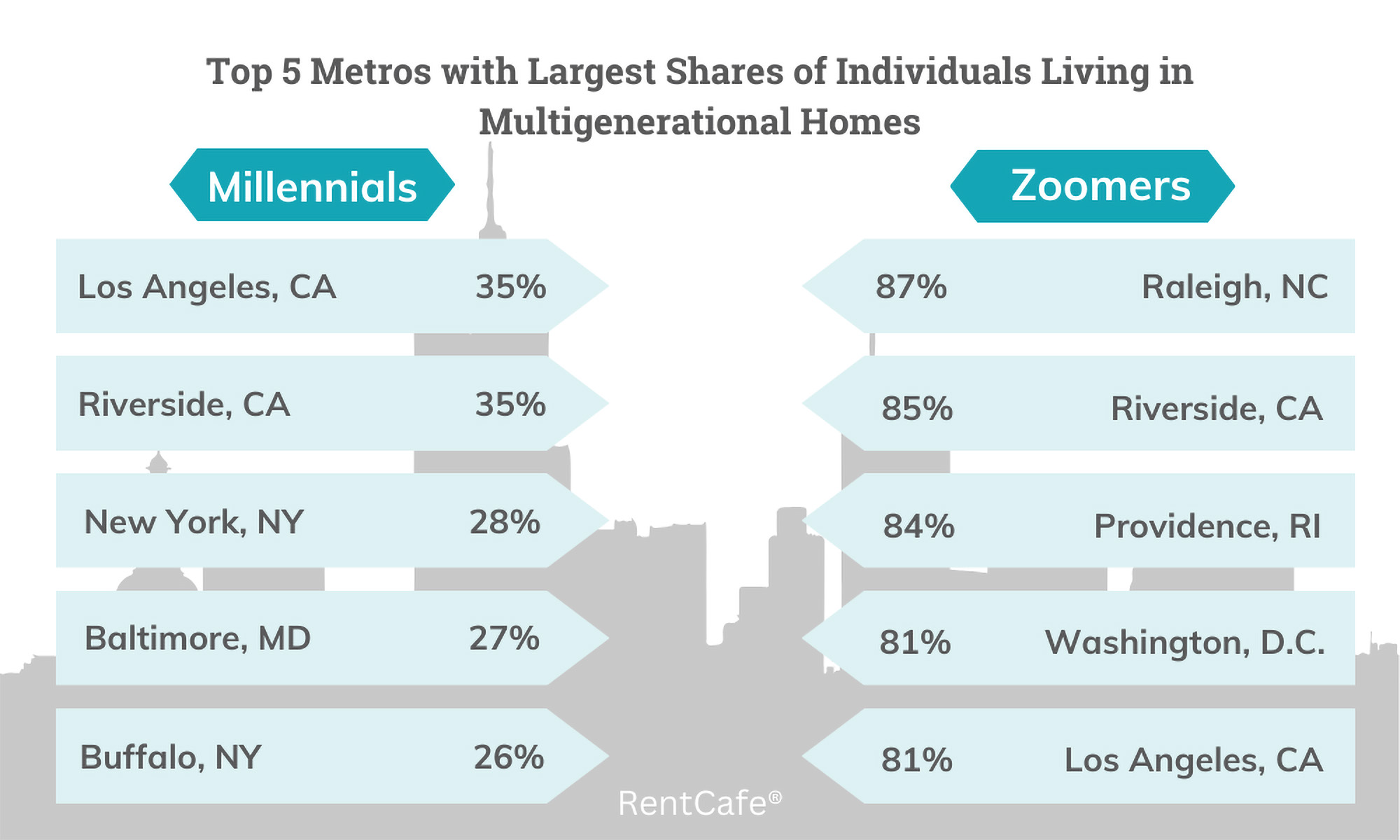Young Adults are Living with Family Longer, Multigenerational Living Report Finds
In a departure from the traditional narrative of young adults leaving the nest, 68% of Gen Z adults and 20% of Millennials are opting to stay within familial confines, according to a recent RentCafe analysis of Integrated Public Use Microdata Series (IPUMS) data.
The analysis opens up a conversation about generational adaptation, economic hardships, and the "evolving familial structures that are reshaping the American Dream," writes Adina Dragos, creative writer, RentCafe.
Multigenerational Living Report Analysis
Analyzing the latest IPUMS data reveals that a significant number of Millennials (14 million) and Gen Z-ers (23 million) share a household with at least one family member, representing the largest generational shares across all age groups.
Among the 51 million people in multigenerational households, 8 million are Gen X, and 6 million are Baby Boomers. Surprisingly, more than 40% of Millennials and Gen Z-ers expect to continue sharing their homes for at least another two years, indicating a sustained trend.
Financial and health-related circumstances emerge as the primary factors influencing the decision to live with family. The data indicates that Millennials, on average, share their homes with three or four other people and are often employed in food services, construction, or education.
Compared to previous generations, Millennials are slower to leave the nest, with 18% of Baby Boomers and 17% of Gen X living with parents at the same age. The trend is also evident among Gen Z, with 68% of Gen Z still at home by age 22.
Contrary to the perception that the pandemic has increased multigenerational living, data from over 20 large U.S. metros indicates a decrease in the number of Gen Y-ers and Gen Z-ers living with family over the past five years. Cities like Cincinnati, Milwaukee, Nashville, Raleigh, Memphis, Las Vegas, St. Louis, and Jacksonville stand out as areas where younger generations are more successfully leaving the parental home.
Cities in the west coast lead the charge as "multigenerational hotspots." Los Angeles and Riverside, Calif., are the two U.S. metros with the largest share of Millennials living in multigenerational homes. For Gen Z, Raleigh, N.C., and Riverside, Calif., top the list.

The high cost of living in these areas, significantly above the national average, explains the challenges faced by young adults trying to leave the nest. East Coast cities like New York, Providence, Baltimore, and Washington, D.C., also present significant shares of Millennials and Gen Z-ers living with family members.
Certain metro areas like Richmond, Va., Louisville, Ky., and Buffalo, N.Y., have experienced increases in the number of Millennials and Gen Z-ers living with family. Employment, cost of living, and personal preference remain significant influencers in the decision of leaving the parental nest.
Read the full analysis at RentCafe.com
